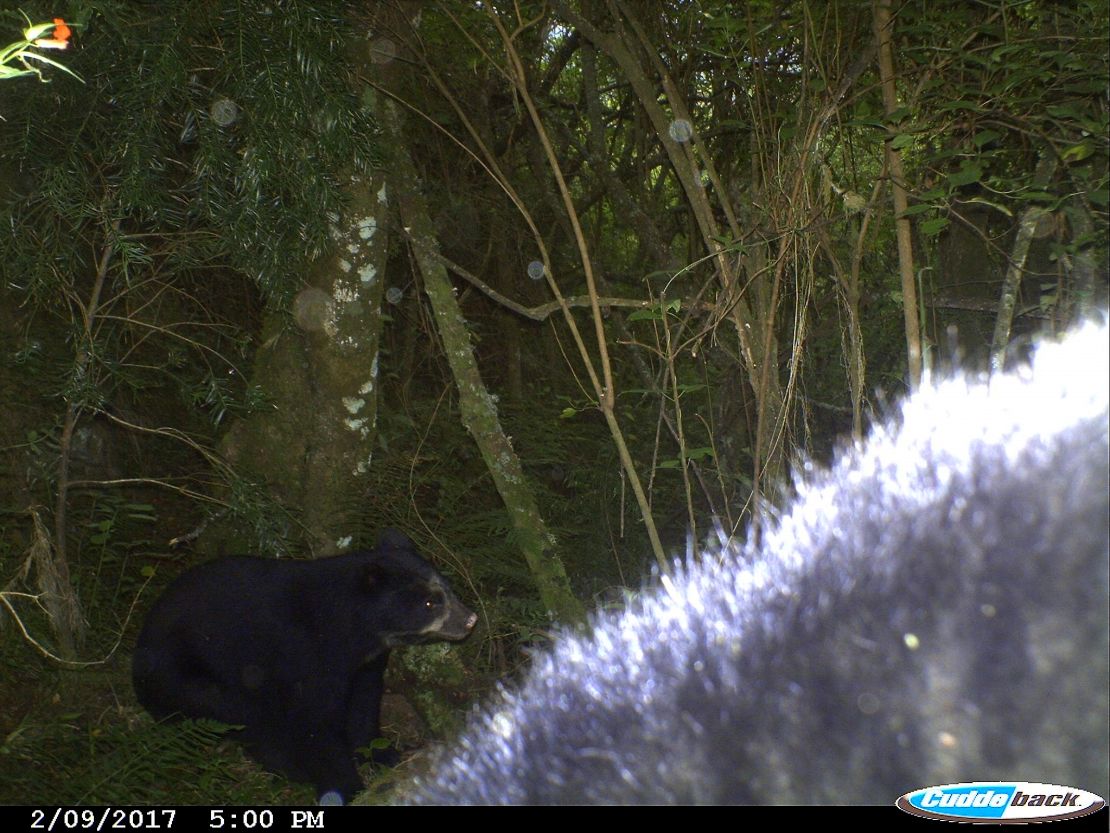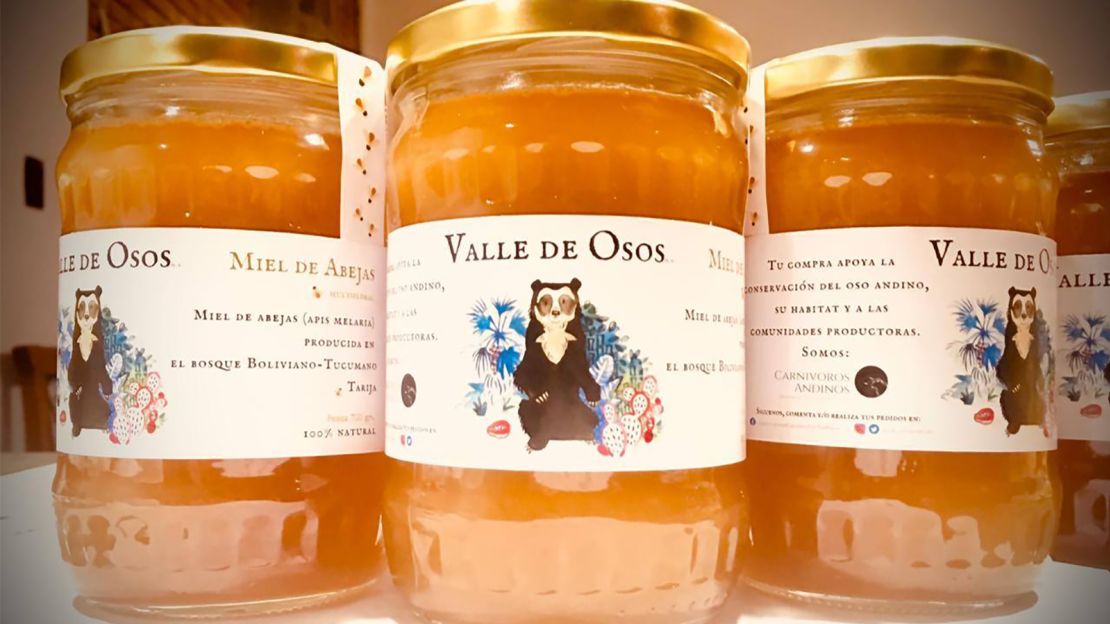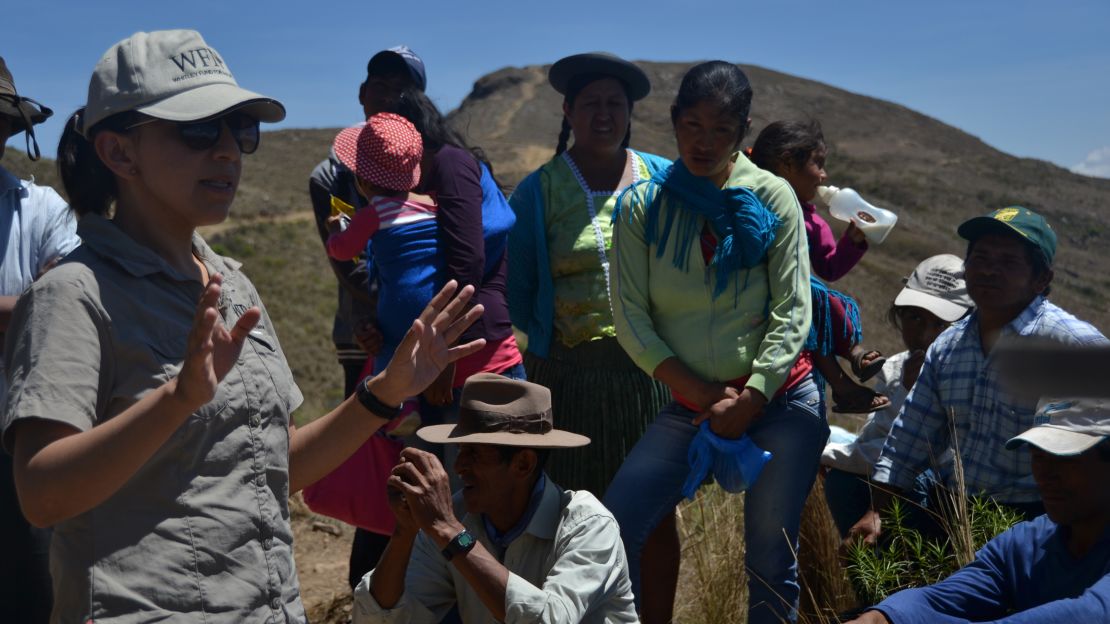Editor’s Note: This story was identified by Call to Earth guest editor Erika Cuéllar. She is a biologist and conservationist, and a Rolex Award Laureate.
A bear cub with distinctive yellow circling about the eyes is caught on camera, deep in the dry forests of the Andes mountain range in Bolivia. Beside it, a glimpse of the shaggy black fur of its mother.
For six months, researchers had laid camera traps across a 600-square-kilometer area, trying to catch sight of the rare spectacled bear. But besides the occasional photo of an indistinguishable hairy figure with its head out of shot, the elusive species had avoided the lens.
The photo was a breakthrough for Bolivian conservationist Ximena Velez-Liendo and her team. “We were over the moon, because it wasn’t just a bear, it was a breeding population,” she says. “That was one of the happiest moments in my life.”

Five years later, Velez-Liendo has gathered essential details on the enigmatic creatures and devised a strategy for protecting them.
As South America’s only bear species, the spectacled or Andean bear is renowned worldwide thanks largely to Paddington Bear, the fictional character who hails from “deepest, darkest Peru.” But in reality, populations across the continent are dwindling.
Fewer than 10,000 spectacled bears remain, according to the International Union for Conservation of Nature (IUCN), which lists the species as vulnerable. In Bolivia, the southernmost country in the world where spectacled bears are found and where Velez-Liendo’s work is focused, there are believed to be around 3,000 individuals.
Severe drought, as a result of climate change, has led local farmers to replace agricultural production with cattle ranches, says Velez-Liendo. The bears, struggling to find food in their own shrinking habitat, encroach on this land and sometimes kill livestock, which leads to farmers killing the bears in retaliation. Deforestation and exploiting the land for oil and mining contributes to habitat loss, while drought unbalances the ecosystem, pushing the species closer to extinction.
Velez-Liendo wants to conserve the “majestic” and “charismatic” creatures to which she has devoted the last 20 years of her life. But her recipe for conservation involves an unusual ingredient: honey.
Bears and beekeepers
Based in the inter-Andean dry forest of southern Bolivia and funded by Chester Zoo and Oxford University’s Wildlife Conservation Research Unit (WildCRU), the project not only monitors the region’s bear population, but trains local people as beekeepers. The idea is that by generating a healthy income from honey, it offers an economic alternative to cattle ranching.
“The main threat (to bears) is definitely people,” says Velez-Liendo, and “cattle are the main reason for people killing bears.” But cattle ranching is not well suited to high elevations and produces small returns at significant environmental cost, requiring 20 times more land, water and resources than it does in the lowlands, she adds.
So the team set up community apiaries, where local people could learn and practise beekeeping. After the first honey harvest, people started building their own private hives. The honey – branded “Valle de Osos,” meaning “Valley of the Bears” – went on sale, and money started to trickle in.

There have been three harvests since the beekeeping project began in 2018, producing 2,750 kilograms of honey and almost $20,000 in revenue, says Velez-Liendo – more than double that generated by cattle.
Circle of life
At the same time, the process is teaching locals about the ecosystem and the bear’s crucial role in maintaining it: by spreading seeds, the bears help to restore forests, which in turn helps to secure water supplies. “People need to see the benefit of protecting the bears,” says Velez-Liendo, and through beekeeping, “we show them that by protecting the bear, they are protecting the forest, and by protecting the forest, they are protecting the bees.”

The project has been widely recognized as crucial in preserving the species, winning the 2017 Whitley Award for grassroots wildlife conservationists. Last month, the Whitley Fund for Nature announced it would fund Velez-Liendo for the next two years, as she works to create a “productive protected landscape” – a management framework that respects traditional land-use while combining restoration and nature-positive economic activity.
She hopes that by presenting a viable framework, other countries with spectacled bear populations will follow suit. Conservation efforts are already underway across South America, including in Ecuador, where a bear corridor has been created north of the capital, Quito, and in Peru, where the Spectacled Bear Conservation Society (SBC) works with indigenous communities to create private protected areas, as well as offering alternative livelihood programs.
Community engagement is essential in long-lasting population change, agrees Canadian biologist Robyn Appleton, who founded the SBC in 2009. “If you don’t have communities onside, you will not be doing any conservation,” she says. “You could have the last bear in Peru, and it wouldn’t matter.”
By building relationships with local communities, Appleton says they have successfully reduced the use of slash and burn – the clearance of land by burning all the trees and plants on it.
The important message to get across is that protecting the bear protects people, too. “We love the bears and we care about wildlife, but we also care about humans,” says Appleton. “For us, it’s about protecting a place – protecting the humans, protecting the wildlife, protecting the ecosystem. They all work together.”
Gardeners of the Andes
Spectacled bears play a vital role in the survival of the whole ecosystem, of which there is not much left. The dry forests of Bolivia, which flank the eastern Andes with shrubs and dense thicket, are critically endangered. According to research from the Arizona Center for Nature Conservation, only 6% remains intact.
Primarily vegetarian, spectacled bears feed on fruit, berries and cacti, and move up to five miles a day, dispersing seeds within the area as they defecate and generating new growth and biodiversity.
Read: Solving India’s deadly conflict between humans and elephants
“Bears are the gardeners of the Andes,” says Velez-Liendo. “In areas where bears have been exterminated, the quality of forest is extremely poor.”
Thanks to Velez-Liendo’s bear program, scientists are now more aware than ever of what other life exists within the ecosystem. Eight species of wild cats have been spotted on the site, including jaguars and pumas, and there have also been sightings of the critically endangered chinchilla rat.
“Because of all our efforts to protect just one species, we’re protecting 31 species of mammals, about 50 species of birds, and 20 species of other amphibians,” says Velez-Liendo. “By protecting bears we’re protecting an entire ecosystem.”












